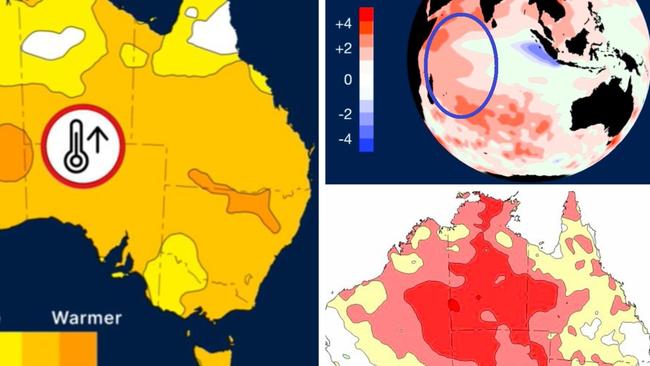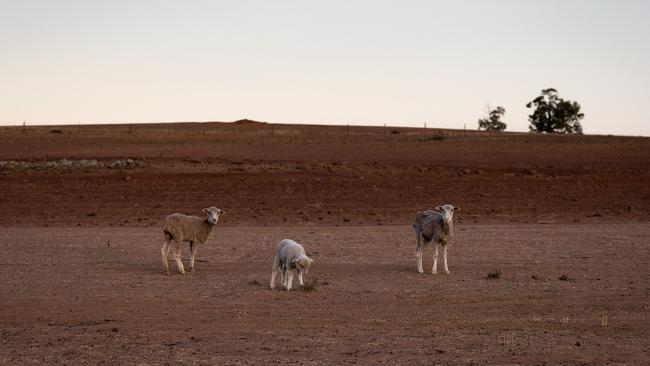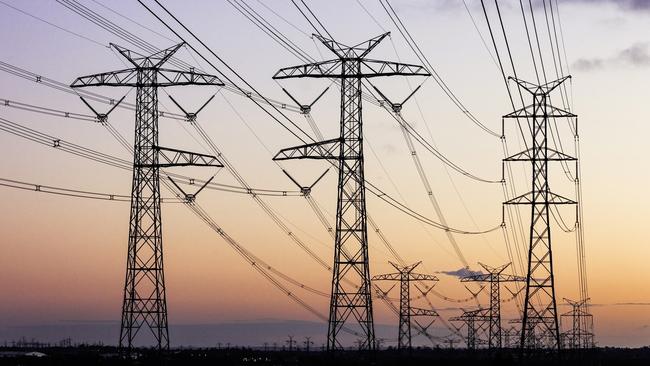El Niño explained: How dry, scorching summer will affect Queensland
El Niño will mean more than a hot, dry summer with wide-reaching ramifications, including drought, possible blackouts and dwindling water supply. Here’s what it’ll mean for Qld.
QLD weather news
Don't miss out on the headlines from QLD weather news. Followed categories will be added to My News.
For the first time in eight years, the world’s most impactful climate driver is active over the Pacific.
Here’s what El Nino means for Queensland, according to the Bureau of Meteorology’s Senior Meteorologist Harry Clark and Senior Climatologist Hugh McDowell.
What is El Niño?
One of the primary global climate drivers, El Niño speaks to the location of warm water in the Pacific Ocean.
Should the water be situated near the American coastline in the east as it is throughout an El Niño period, then “rainfall tends to be suppressed,” Mr Clark said.
This culminates in below average spring and summer rainfall, opening the door for drought, heatwave and bushfire impacts.

What are the highest maximum temperatures Queensland can expect?
In a sign of things to come, Coolangatta recorded its warmest September day in 38 years of keeping records on Thursday at 33.9C, breaking the previous mark of 33C.
Mr McDowell said Queensland should brace for this “unusually warm” forecast to remain long term in contrast to the milder summers of recent years.
“Unusually warm means more temperatures in the high 30s and 40s,” he said.
“We’ve come off the back of three pretty wet years with La Nina, and it’s going to be a real flip in conditions from that.”
More of these oppressive, spiking heatwave type conditions will occur through the remainder of spring and leading into summer as contrasting battle for supremacy, said Mr Clark.
“Spring is pretty much a battle of the masses,” he said.
“You have the cool winds from down south, that warmer winter up north, and it‘s that time of year where they’re really sort of battling each other for dominance.”
Can we expect plenty of cyclones, storms?
Drier conditions won’t prevent the occurrence of wild weather events and natural disasters throughout summer, although Queenslanders may have longer to prepare than recent years.
“Typically, what we see in our El Niño years is a later start to the wet season up north, so a later monsoon onset and typically fewer than average cyclones,” Mr Clark said.
“But I‘d say that with some caveats, and that overall, the numbers are somewhat decreasing anyway and it only takes one cyclone to be a significant season.
“There‘ll certainly be storms and severe storms over the next few months. It happens every year.”
What about drought?
The reprieve of higher rainfall in recent years won’t last for Queenslanders at risk of drought.
“Certainly you could say that below average rainfall, and above average temperatures predisposes you to seeing drought, but in terms of actually declaring drought - that sits with the state government,” said Mr Clark.
On a rainfall front, we‘ve seen very much below average rainfall at parts of southern and central plains and over the last few months, so certainly it is aligning with the (drought) expectations.”

Are Queensland’s dams full enough or could we face water restrictions?
According to SEQwater, the total water grid storage levels are currently at 70 per cent, while Somerset Dam has reached nearly 80 per cent of its volume.
South-East Queensland’s largest water storage location, Wivenhoe Dam, is at approximately 70 per cent capacity as of late September.
Due to “infrastructure updates”, the Wivenhoe Dam’s storage will be maintained at 90 per cent full supply level, Somerset Dam 80 per cent full supply level and North Pine 68 per cent full supply level in the foreseeable future.
The temporary levels mean the SEQ Water Grid at full supply is approximately 88 per cent.
Somerset and Wivenhoe Dam have 100 per cent of their flood storage capacity available.
Cause for some concern throughout the El Niño period is the water usage of average Queenslanders.
Throughout August, the average person used 169 litres of water daily, up 11 litres from the previous month, an ominous trend ahead of the less than average rainfall predicted.
How is the electricity grid stability, could we be facing a summer of blackouts?
Consistent with the change in outlook for New South Wales, with which Queensland shares electricity reliability support, the short term risk in the state is reduced for the electrical grid.
Energex spokesperson Danny Donald is adamant the state’s networks can withstand the temperature surge of El Niño.
“El Niño is nothing we haven’t dealt with before on the extreme end of things,” he said.
“It’s nothing out of the ordinary to have days above 40 degrees and the network runs quite well.”
“We prepare on the basis that it’s going to be an extremely hot summer every year and distribute power in one of hottest parts of the world, so we’re confident we’re prepared for whatever Mother Nature throws at us again.”

However, Grattan Institute energy director Tony Wood warned a combination of factors including a hotter than usual summer leading more people to use airconditioning, higher power prices and the outage of the Callide power station’s C3 and C4 generators could create some instability.
Stability in the electricity network and avoiding widespread blackouts can be assured through common sense solutions.
“The biggest consumers of energy in the state by far are air conditioners, particularly in South East Queensland,” said Mr Donald.
“We recommend running it 24 degrees, which is enough to keep cool but won’t heat up your power bill too much.
“Don’t let your teenager stand at the fridge with it open, just common sense things all Queenslanders know.”
Mr Donald said an increased focus on bushfire prevention has been necessary with the looming El Niño period.
“It’s not just hot weather, but when there’s increased fuel load with bushfires that has added another element to this year’s preparedness plan,” he said.
“We’ve already been wrapping poles in fire retardant wrap and clearing bases in bush areas.
“We have ramped it up as firies are having concerns.”




